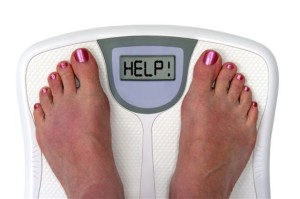
I’m always up for trying new things. And those things usually involve my health in some way. Be it trying new healthy recipes, herbs/supplements/diets or lifestyle changes, I want to be the best person I can be. If I’m the healthiest I can be, that’s a good start.
Over the past year I’ve blogged about many of my adventures. In the long run, some worked and some not so much. Here’s what I’ve found.
Lemon Water – I blogged about this in Sept 2012. The purported benefits of drinking water infused with lemon juice include weight loss, improved digestion, boosts immune system, balances pH (reduces acidity in your body), clears your skin, acts as a diuretic, relieves respiratory problems, freshens breath, reduces stress, helps kick the coffee habit, hydrates the lymph system, boosts energy, flushes toxins from your liver and kidneys, suppresses appetite, reduces cellulite (because it increases blood flow to the skin and helps your body flush out waste), boosts your body’s ability to metabolize fat, and lowers your risk for heart disease, strokes, cataracts and gout because of the high amount of vitamin C. If drinking lemon water allowed me even one or two of these benefits, I had to try it. A year later, I still like it. I went off the wagon for a few weeks. Got lazy I guess. But I found that I actually look forward to my lemon water in the morning. The idea is to drink it first thing upon waking, and not put anything else into your stomach for at least half an hour. Easy enough. I bought a pitcher which has an infuser attachment. I chop up a peeled lemon (organic if possible) and put it in my infuser pitcher with filtered water. It lasts a week (adding more water as needed). Even throughout the day, I find I grab the lemon water pitcher before I grab my iced green tea if I want a quick drink. If nothing else, this means I’m consuming less sugar. And I seem to make better food choices throughout the day when I’m ‘on’ the lemon water. Whether the benefits are psychological or physical, the lemon water thing gets an A+.
Juicing – I don’t think I’ve blogged about this yet. This past summer, I bought a Vitamix. I know I need to get more fresh fruits and veggies into my diet and, opting for the method of least resistance, thought “why not smash them up and drink them”? My intentions were good. And the Vitamix is awesome. It even makes hot soup! But back to my point. I went to the farmers market and stocked up on lots of fresh fruit (berries and bananas mostly). I also ‘bravely’ added kale, carrots (which I hate) and chia to my morning smoothies. However, I was overly ambitious. Using my American ‘the bigger the better’ mindset, I would juice a LOT of fruit and wind up with 30-40 ounces, which I would drink down throughout the morning. This lead to a very bloated belly. And too much sugar. Being the blonde that I am, it took me a month to figure out that while my intentions were good, my methodology sucked. So I stopped juicing. Also bad. Now that I’ve got my head out of my butt, I am going to make better juicing choices (less sugar, more veggies, smaller quantities) and see how that goes. There is not doubt in my mind that moving to a more plant-based alkaline diet is better for the human body. I just need to find a better way to make it work for me.
Yoga – I used to be a gym rat. For about 5 years or so, I would be at the gym five or more days a week. And not just to socialize. I actually worked out. And I liked the results. Was I as thin as I wanted to be? Will I EVER be? But I did have good muscle tone which I knew was healthy. And then I made some big changes in my personal life and wound up dropping the gym membership. Just quit cold turkey. In reality, my body needed a break. And surprisingly, I didn’t gain weight. But I lost muscle tone. Having strong muscles is sexier (and healthier) than overall body weight in my opinion. I needed to get it back, but was still mentally done with the gym. Enter yoga. If you haven’t done it before, you’ve got to try it. There’s something for everyone, be it stretchy yoga, hot yoga, Barre yoga (which almost killed me!) or power yoga. It works. It can be a surprisingly difficult workout, a therapeutic muscle relaxer, a flexibility creator or a mental healer. Yoga has so much to offer and I can’t say enough good things about it. Try it.
Coconut Oil – I wrote about this wonder ingredient in December 2012. One of our Facebook fans mentioned using it as a make up remover, so I tried it. And then I read more about it and started using it daily. Not only is it the best make up remover, but it’s a superior moisturizer and excellent cleanser. If you missed my December blog article, go back and check it out for details. I will never go another day without using coconut oil.
Massage – I don’t think I wrote about this either, but it’s something I firmly believe in. Now I’m weird. We’ve probably already established that. But one of my quirks is that I don’t like people touching me. Between that and having had my back broken in a car accident when I was 19, you might say I’m NOT a good candidate for massage. The trick to is finding out what works best for you. Studies have found that massage can benefit the following disorders:
- Anxiety
- Digestive disorders
- Fibromyalgia
- Headaches
- Insomnia related to stress
- Myofascial pain syndrome
- Paresthesias and nerve pain
- Soft tissue strains or injuries
- Sports injuries
- Temporomandibular joint pain
Beyond the benefits for specific conditions or diseases, some people enjoy massage because it often involves caring, comfort, a sense of empowerment and creating deep connections with the individual performing the massage. If you are looking to strengthen your intimate relationship, I highly suggest massage. You don’t have to go to school and become a massage therapist to make this work. Pick up a book, or go on line to learn about a handful of techniques, and go from there. I personally like using a massage bar instead of massage oil because it’s moisturizing, not messy and allows the hands to flow more easily along the body. Honeybee will be coming out with our own massage bar very soon. But you don’t need anything other than a comfortable quiet space, time and patience. Give and receive. Even if it’s just 15 minutes with your partner (or try self massage) before you go to sleep. The physical and psychological benefits are amazing.
Reducing Sugar and Dairy – This is a daily struggle, but one I truly believe in for overall health. Sugar seems to be in EVERYTHING from the obvious coffee additive to the seemingly harmless banana. Recognizing all the sources of sugar in your diet is step one. Step two is either eliminating or finding substitutions. And sugar is incredibly addictive: The more you eat, the more addictive it becomes. Studies show that all the sugar in our diets either directly or indirectly contributes to diseases like osteoporosis, obesity, heart disease, and cancer. I am NOT a fan of sugar substitutes in any form (xylitol, stevia, etc.) There are articles on line you can read about recognizing sugar in foods (especially hidden sugar) and steps you can take to reduce it in your diet. Same goes with dairy. We are the only species that drinks another mammals milk. That thought kind of grosses me out. Our bodies weren’t made to digest milk on a regular basis. Instead, most scientists agree that it’s better for us to get calcium, potassium, protein and fats from other food sources, like whole plant foods: vegetables, fruits, beans, whole grains, nuts, seeds and seaweed. And let’s not forget all the pesticides, hormones, antibiotics found in conventional milk CAN’T be good for you. Will I give up cheese? Nope, probably never. But I will have very small amounts and only on the rare occasion.
So what DIDN’T work for me over the past year? A few things.
Dry Brushing – I wrote about this in January of this year. Dry brushing is supposed to have several benefits, but I couldn’t find hard scientific evidence to back any of them up. At least it will exfoliate your skin, if nothing else. I have a dry brush. I do it occasionally (more so in winter when my skin is ugly and dry). But getting my butt into the shower in the morning is difficult enough. Stopping to dry brush my entire body first just isn’t going to happen on most days.
Oil Pulling – I wrote about this unusual practice in April of this year. I had read a few articles about it and again found a myriad of conditions is was supposed to help from arthritis to PMS. It involves swishing oil around in your mouth for 20 minutes or so, and spitting it out. The oil is supposed to ‘pull’ the toxins from your body. Again, I didn’t find a whole lot of good scientific evidence to back up the claims. And as with dry brushing, I don’t have the patience or energy to deal with this first thing in the morning.
Dark Chocolate – I experimented with dark chocolate because 1) I love it, and 2) like everything else, it’s supposed to cure almost anything. What I was really hoping is that it would cure my sweet tooth. I thought if I could eat a small square of dark chocolate a day, I would eliminate my desire for sweets forever. It didn’t quite work out that way. While I still LOVE dark chocolate and think it’s a healthier alternative than having a donut, I don’t think it will ever be found as a cure for cancer, nor will it ever keep me from still craving a slice of cake.
Tanning – I’ll admit it. I tanned. For around two years, about once or twice a week. My husband convinced me that I looked better tan. I was also convinced that cellulite would be less noticeable if my skin was darker. Being naturally fair-skinned and therefore more susceptible to skin cancer, fast-forward three years and five skin cancer biopsies (two basal cell carcinomas). Not to mention that it aged my skin incredibly. I regret having done it. Did I like the way I looked when tan? Yes. Is the skin damage worth it? No. Will I avoid the sun completely? Nope. But I will wear sunscreen, still tan naturally, but never burn. I could use self tanners I suppose, but don’t have the patience to slather my body with something every day (not to mention the ingredients some self tanners contain). So I will be pale most of the year. Deal with it.






- Facebook
- Instagram
- Twitter
- YouTube
- Pinterest
Follow @Honeybee_Grdns